Coed y Bleiddiau is our newest Landmark – a wonderful Welsh railway cottage which will be opening its doors to our first guests later this month. ‘Coed y Bleiddiau’ means ‘Wood of the Wolves’, and its location – out on the slope of a wooded valley in Snowdonia – is just as wild and remote as you might expect, given the name.
This presented certain challenges for our restoration of the building – namely, the transport of all the necessary materials and furnishings. We’ve always liked a challenge here at Landmark – especially when the solution involves getting to use a piece of historic infrastructure…
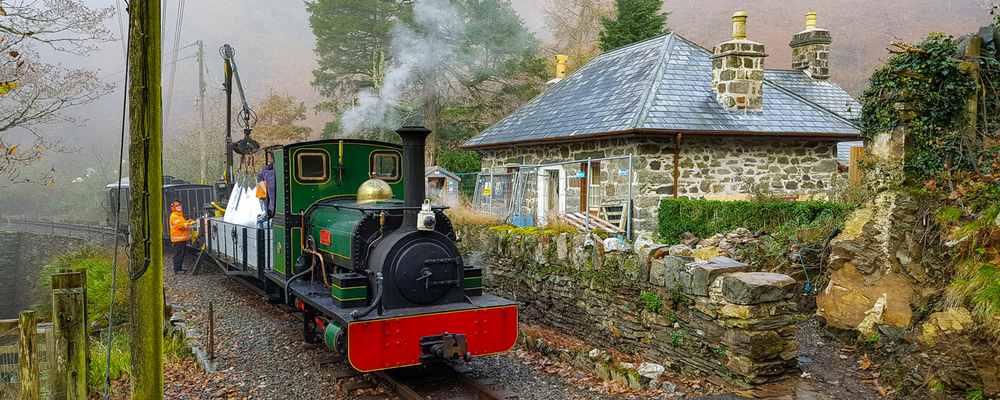
Unloading building materials at Coed y Bleiddiau
The Ffestiniog Railway was laid between 1833 and 1836, enabling the transportation of slate from the quarries around Ffestiniog down to the coast at Porthmadog. As discussed on our page about the history of Coed y Bleiddiau, our cottage was built as an intermediate stop between two larger stations; the train line runs right past the front door, where even today you can still alight from the historic steam train that continues to run along the railway.
Though the Ffestiniog Railway now serves to carry people rather than slate, we were thrilled to be able to revive its original function in aid of our restoration – the transportation of building materials. Everything from kitchen-ware to antique furniture had to be loaded onto a train, transported down the line (occasionally in the old hand operated trolleys), and finally unloaded at Coed y Bleiddiau for us to use.
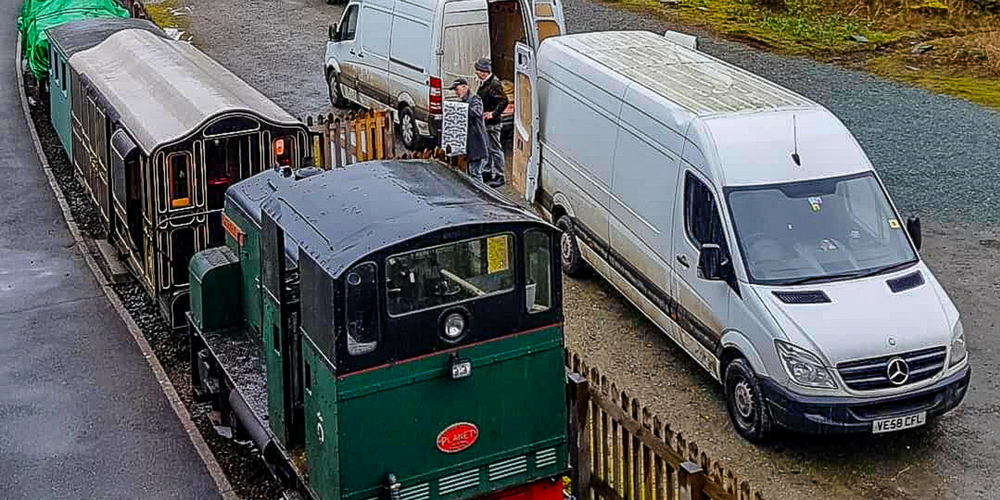
Loading furniture onto the train
Even though it had been lived in until 2006, the cottage was severely dilapidated when we agreed to take it on in 2013. We had to carefully strip out all the rotten woodwork, plaster, and ceilings, retaining all we could of the original fabric. When undergoing restoration, architectural heritage has a tendency to reveal hidden treasures; artefacts of the past, preserved by their incorporation into the fabric of a building. Coed y Bleiddiau was certainly no exception.
We discovered that an old railway mile post from the days of the horse tramway had been used as a lintel for the bathroom window. This is only the fourth such post to be found, and has been returned to its rightful place on the railway.
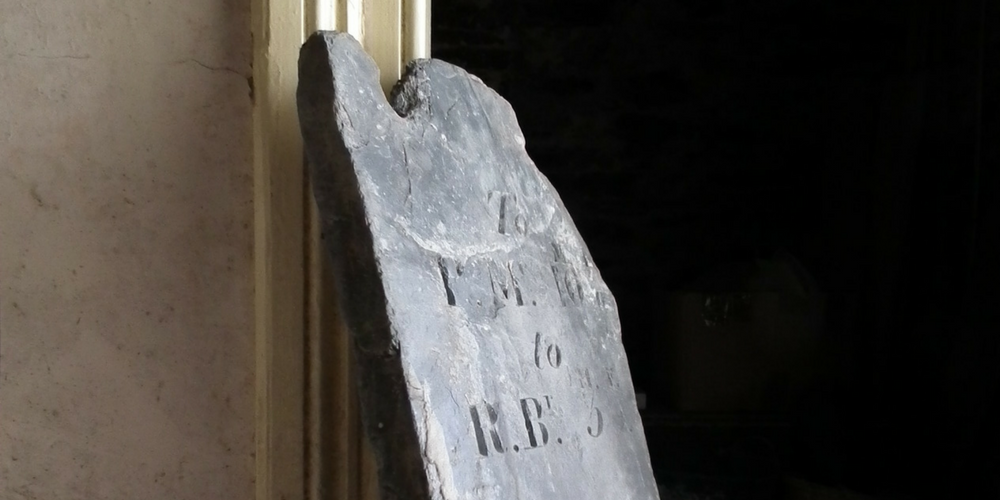
Railway mile post
We also found the name ‘Hovenden’ scratched into a windowpane in curly script. This was the surname of the railway superintendent for whom the cottage was originally built - T. Henry Hovenden - though we can only speculate as to whether he made the engraving himself, or whether it was the handiwork of one of his mischievous children.
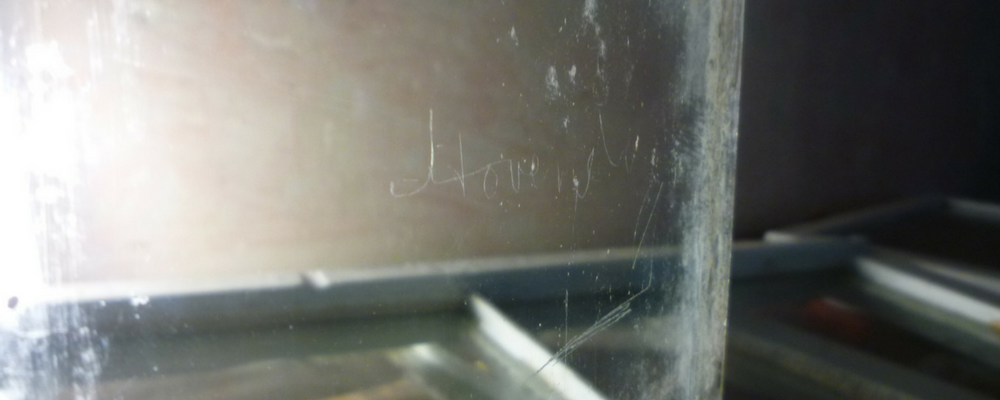
‘Hovenden’ scratched into a windowpane
The building has now been completely rewired, and had new amenities installed (including a septic tank) before re-plastering, installing a new bathroom and kitchen, and rebuilding the chimney stack. New slate floor slabs were fitted throughout the ground floor, and wooden floorboards on the first floor replaced where necessary. The building’s sash windows and the tiny, rickety porch were dismantled and taken to our furniture store to be re-made, before being transported back and re-installed. Externally, the joinery has been re-painted in brown and cream; the traditional livery of the Ffestiniog line for its intermediate stops (the stations are painted maroon).
Following our sensitive restoration, Coed y Bleiddiau is as snug and simple as it would have been when it was first built in 1863 (though with the benefit of modern amenities). Take a look at its transformation by hovering over the photos below:
Exterior
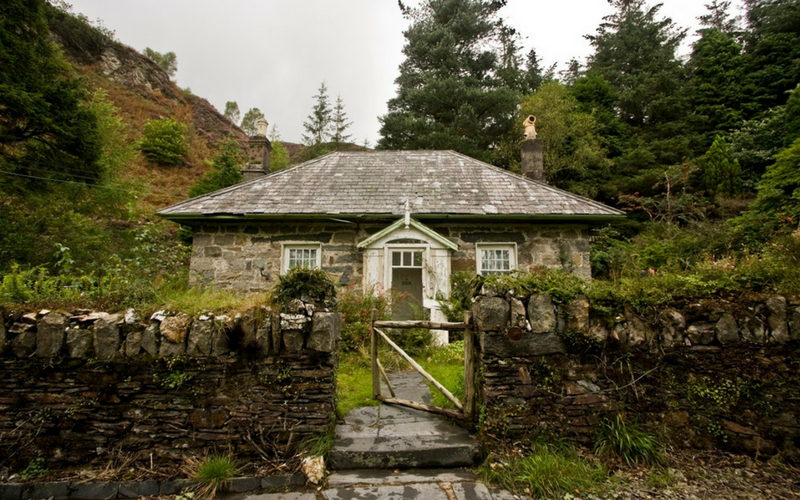
The Lounge
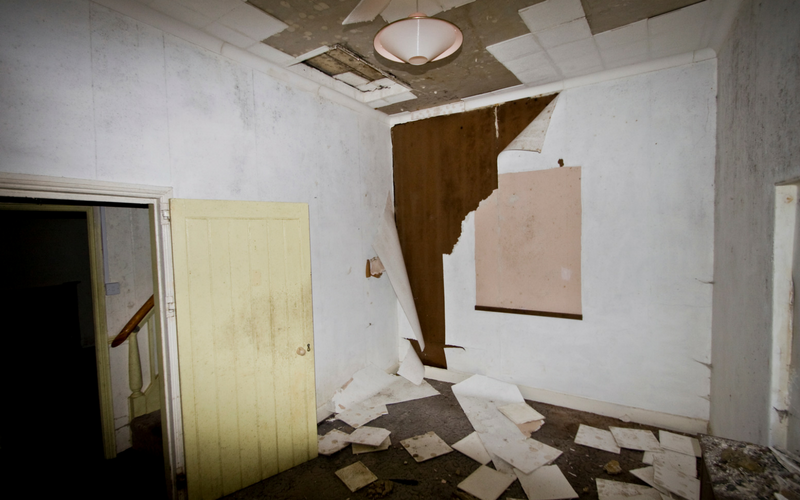
The kitchen
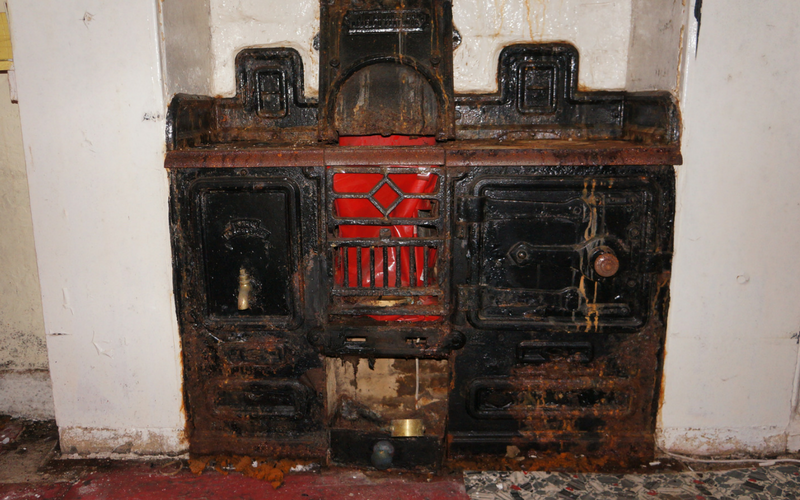
A bedroom
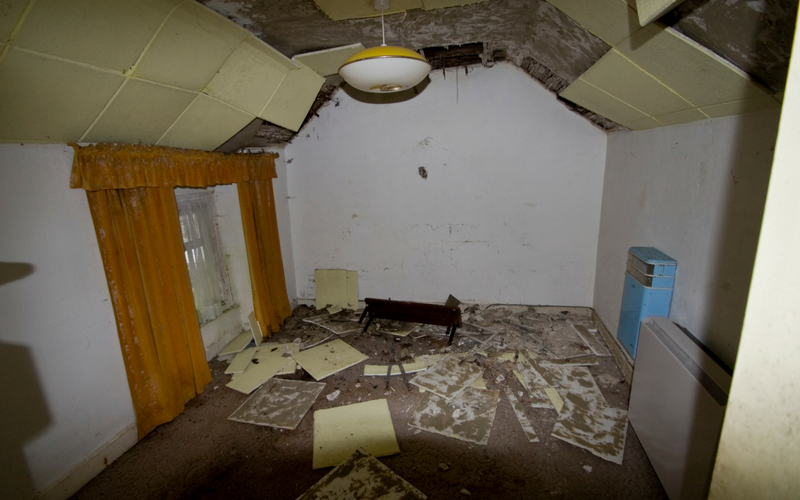
The Bathroom
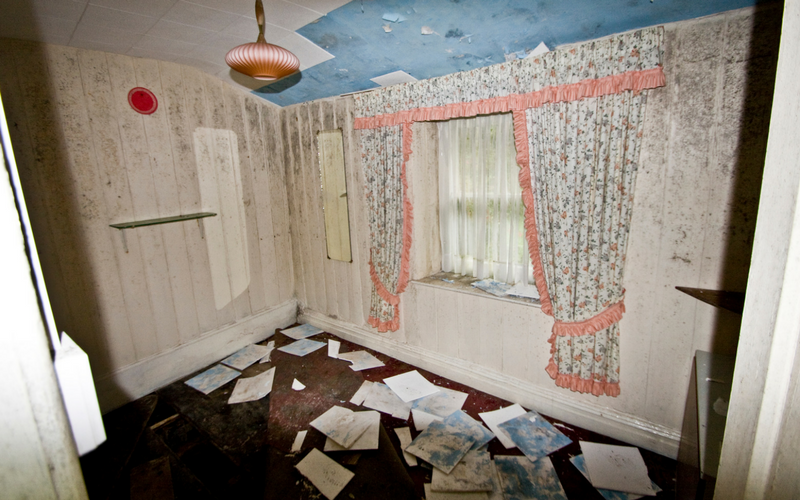
Coed y Bleiddiau sleeps 4 and is available from £23 per person per night.